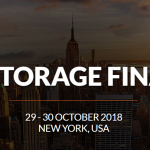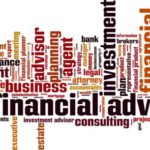Will Rare Earths Cripple the Green Economy? Part 1
Eamon Keane Rare Earth Elements Eamon Keane This is Part One of a three part series based on a rare earth elements (REE) review which is available for download at slideshare, where references can be viewed. Part 1 is an introduction to REEs. Part 2 analyzes REE consumption and refining and Part 3 looks at how REEs might affect the green economy. Rare earths captured the popular imagination a year or two ago. Since then a bonfire of reports, presentations and analyses have been published, with many generating more consulting fees...
Stock Picking For Green Investors (Presentation)
Here is a short presentation on stock picking for green investors by AltEnergyStocks Editor Tom Konrad CFA, Ph.D., with a couple stock picks. I gave this presentation as part of a workshop on divestment from fossil fuels and investment in green stocks at the third annual Climate Solutions Summit. The Divestment part is here.
Commodity Energy Vs. Technology Energy: This Changes Everything
by Garvin Jabusch We now live in a global economy with two fundamentally different types of energy: commodity-based in the form of fossil fuels and uranium, and technology-based, represented primarily by solar and wind. That observation is interesting as far as it goes, but what does it mean? The term renewable (as it pertains to energy) gets used so often that it is easy to forget what it really entails. For starters, tech-based renewables become less expensive over time, as demand for them drives scale, innovation, and improves cost structures in implementation (think about the last couple of computers...
Conference Brief – Solar & Storage Finance
Renewable energy finance has many different kinds of participants, as revealed recently at the Solar & Storage Finance conference hosted in NYC. . Listening to the live actors from the financial side of the renewable power industry moved the issues off the page, to a more concrete experience of their specific concerns, including the extent to which their distinct missions were siloed, how they are competitive, and how they synergize.
The presentations were organized to highlight these differences. Several panel discussions were set back-to-back the contrast between lenders vs tax equity investors, both in terms of their goals, but also...
Google’s Renewed Cleantech Investment Binge
James Montgomery Google Doodle for Earth Day 2006 This week the Internet giant Google revealed that in December it invested $75 million in Pattern Energy's (NASD:PEGI) 182-MW Panhandle 2 wind farm in Carson County, Texas, northeast of Amarillo, expected to be operational by the end of this year. Pattern will hold an 80 percent stake in the project, whose owners also include Google and two institutional tax equity investors, with Morgan Stanley providing construction and equity bridge loans and a letter of credit. Google certainly has displayed a healthy...
SEC Charges Chinese Units of Five Accounting Firms; Chinese Cos Defect
Doug Young Media are buzzing with word that the US securities regulator is once again tussling with major auditors over access to the accounting records of US-listed Chinese firms, in the latest chapter of an ongoing story; but what has me more intrigued is the scramble that is probably taking place behind the scenes, as those same auditors try to figure out what they will do when the inevitable happens and they are forced to share their records with the US Securities and Exchange Administration (SEC). Right now I can imagine what is happening: the auditors, including big...
Bearing The Interest Burden
by Debra Fiakas CFA Smaller companies frequently avoid debt as a capital source, relying instead mostly on equity. After all common stock holders are often content to wait for years for a dividend as the small, young company secures its market position and builds profits. Pesky creditors are always knocking on the door for interest payments and principal return. Yet, a number of smaller companies included in our Beach Boys Index of alternative fuel producers have chosen to use debt. We reviewed a group of them to determine the impact of increase in interest rates that could...
Sustainable Investment Opportunity In 2017
by Garvin Jabusch Lord Nicholas Stern recently said, “Strong investment in sustainable infrastructurethat’s the growth story of the future. This will set off innovation, discovery, much more creative ways of doing things. This is the story of growth, which is the only one available because any attempt at high-carbon growth would self-destruct .” More pointedly, the Investment Bank division at Morgan Stanley in 2016 advised clients that long-term investment in fossil fuels may be a bad financial decision, writing, “Investors cannot assume economic growth will continue to rely heavily on an energy sector powered predominantly by fossil fuels." What...
Will Rare Earths Cripple the Green Economy? Part 3
Eamon Keane This is Part Three of a three part series based on a rare earth elements (REE) review which is available for download at slideshare, where references can be viewed. Part 1 is an introduction to REEs. Part 2 analyzes REE consumption and refining and Part 3 looks at how REEs might affect the green economy. There have been several forecasts made for future demand. Approximate data was derived from Byron Capital Market’s own estimate and the data contained in Oakdene Hollins’ May 2010 report “Lanthanide Resources and Alternatives” for others . Figure...
Why Alternative Energy Stocks
Are Alternative energy stocks the Microsoft of the future? If you invested $1,000 in MSFT back in 1986 your investment would now be worth over $300,000. If you really believed in the Personal Computing industry you could have also invested in companies like Intel, Apple, and Cisco at bargain basement prices.
Alternative Energy Stocks In 2013: Winners And Losers
By Harris Roen Alternative energy stocks had an epic year in 2013. The widely watched Ardour Global Alternative Energy Index Composite (AGIGL) was up 53% in 2013. That’s double the 26% return for the S&P 500. In fact, 2013 marked the largest annual return for the AGIGL since 2007. In January 2013, I predicted that “…low interest rates and plenty of corporate cash will be a strong driver of stocks in 2013, including the growth industries within alternative energy.” That forecast turned out to be true and then some. This report drills down...
Cleantech Venture Capitalists are Human Too
David Gold Sectors like solar, biofuels and smart grid have received a significant overweighting of venture capital investment compared to other sectors. Is this because they are better investment opportunities or because venture capitalists (VCs), being human, invest in what they know and who they know? While many entrepreneurs may not believe it, VCs are human, too. In my last post, “Human Capital, Not Venture Capital, the Biggest Cleantech Need,” I discussed how the greatest challenge today to growing a successful early-stage cleantech business is the shortage of successful, experienced cleantech entrepreneurs. But finding the right...
Earnings Are Mixed for the New Year
By Harris Roen There have been six earnings reports released so far in 2013 for alternative energy stocks, all small or microcap companies. There were no blowouts, but also no superstars – most were within analyst expectation or somewhat below. Date DayStar Technologies Inc. (DSTI) More Info 1/7/2013 Revenues remain elusive for this thin cell PV producer. EPS dropped about 10%, and gross losses doubled. The stock is down 35% for the year, but has bounced up 20% for the quarter. SEC...
Investing in Climate Change…Again And Again
I caught this one a little late, but thought it might still be useful. The Globe & Mail, Canada's main national newspaper, is running, in its investment section, a segment on investing in climate change. I didn't find all of it useful, but there are some interesting nuggets of information that are worth sharing. More specifically, I enjoyed the piece on cleantech ETFs called "Go clean, invest green". It discusses The PowerShares WilderHill Clean Energy Portfolio , the PowerShares WilderHill Progressive Energy Portfolio , the PowerShares Cleantech Portfolio and the Claymore/LGA Green ETF . ...
List of Green Investment Advisors
If you want your money to help with the transition to the clean energy economy, most investment advisors will probably try to accommodate by finding a few green mutual funds for you.
There are now hundreds of mutual funds and ETFs that brand themselves as green, but many will not meet your definition of what is "green." This could mean not being completely divested from fossil fuels, investing in nuclear power, or owning too much of non-fossil fuel stocks like Apple (AAPL) and Facebook (FB) and not enough green-focused companies like Tesla (TSLA).
An investment advisor who does not consider values...
Alternative Energy Will Outperform The Market, With Storage Stocks Leading the Way
The public relations firm Waggener Edstrom released a survey of investors and analysts yesterday seeking opinions on what was in store for alternative energy for 2009 (link to the survey at the end of this article). Of the 81 respondents, 47 were institutional investors, 26 were brokerage analysts, five were from independent research firms and three were classified as "Other industry participants". Overall, 58% of respondents were from the buy side, 32% from the sell side and the remainder from "Other". Here are a few tidbits that caught my attention. Storage: The Next Boom? Overall, 50% of respondents expect...





